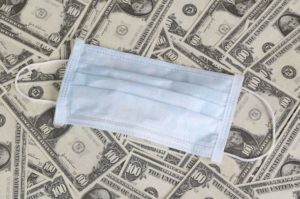
COVID-19 Impact Mitigation for Economic Re-entry
The COVID-19 pandemic has made one thing clear: business will not resume as usual post COVID-19 and unfortunately not every manufacturer is going to come out of this crisis intact.
Now is the time to talk about what business is going to be like when operations resume. A critical factor is how well leadership acknowledges the situation at hand and is going to challenge leaders now more than ever.
When it comes to automotive, the shutdown of OEM plants has had a pronounced ripple effect on the rest of the industry, with thousands of suppliers and sub-suppliers being directly impacted. Looking forward, with everyone planning to relaunch at roughly the same time, there will be added strain placed on the global supply chain.
Ramping back up certainly will be a major challenge for the entire industry. There will be a slow restarting of operations, first for the plants and then for suppliers, with the plants that support the most profitable vehicles being the first to come back online.
While all of this ultimately is a step in the right direction, the fact is that the industry is still facing serious headwinds as restrictions on public life remain in effect and will continue to be in place for some time.
On the whole, the economic impact of the pandemic is going to be felt most likely through the end of the year. Manufacturing will start to see a rebound first quarter of 2021.
There are certain practices that businesses need to be adopting to help them prepare for the next time a crisis comes about. Critical among them is embracing technology and automation like never before. Businesses must find avenues to run their operations with technology at the forefront.
Additionally, businesses will need to have tighter control when it comes to cash management, including paying down debt more rapidly, as well as implementing practices to address workforce readiness.
There’s no question the industry will undergo some significant changes as a result of this pandemic. One of the biggest shifts will be around the level of dependence on China when it comes to production and tooling. There is the potential for the industry to be less reliant on China because of what has transpired, and a scenario in which a larger percentage of production moves back to the U.S.
On a more holistic level, this crisis can yield positive change. Hopefully, this will be the shift in the industry that we’ve been waiting for. This includes businesses implementing new technologies, automation strategies, embracing a flexible workplace and placing a greater emphasis on keeping employees safe and healthy.
Companies should be taking the necessary steps now to prioritize safety of its workers, prioritize efficiency, reduce costs all to mitigate the impact of re-entry post COVID-19.
